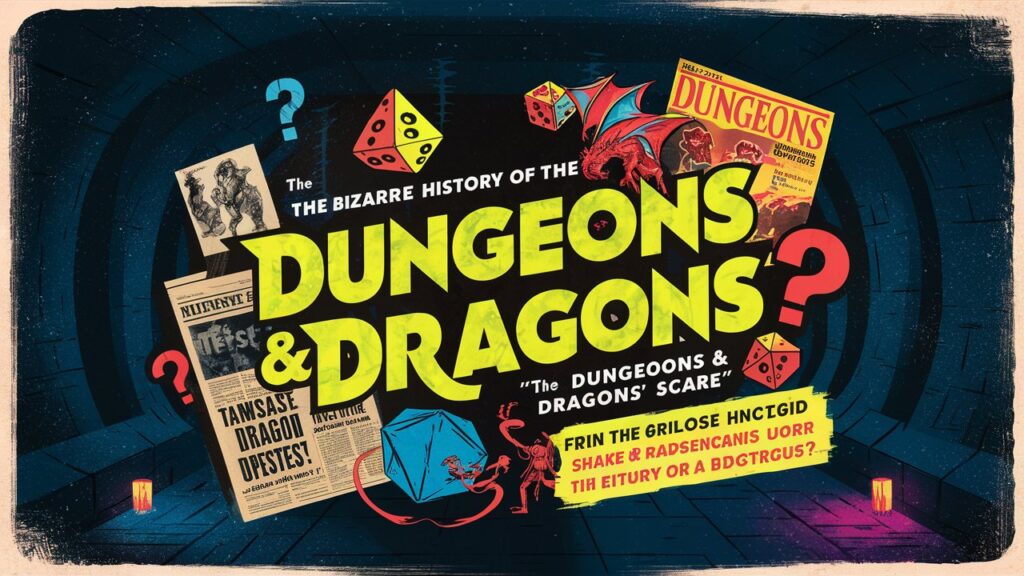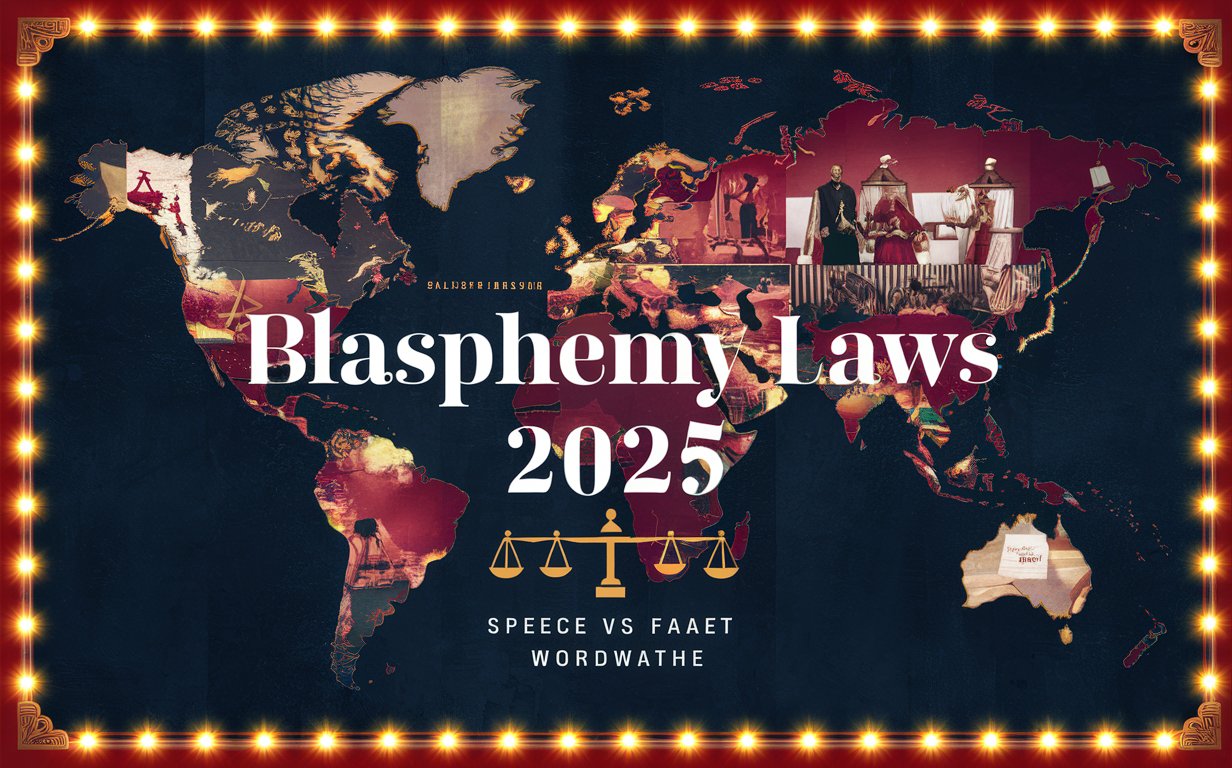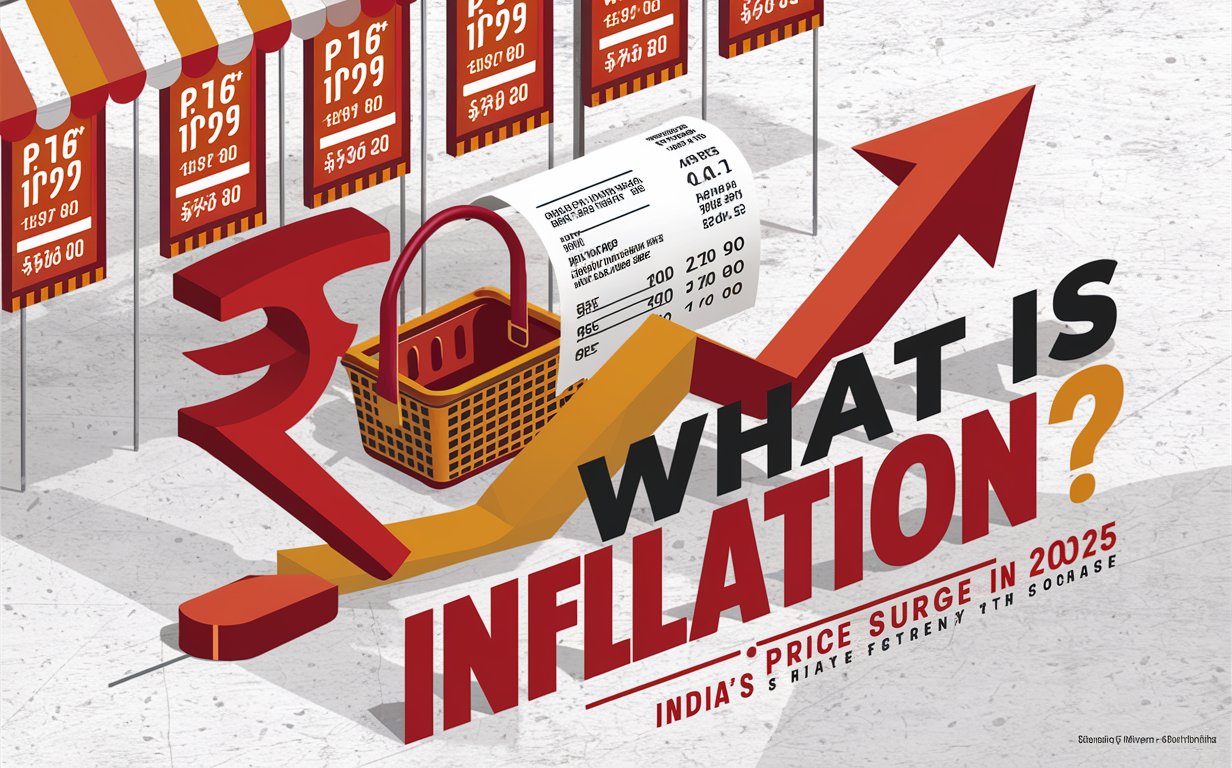The Bizarre History of the 1980s “Dungeons & Dragons” Scare

In the early 1980s, a wave of moral panic swept across America, targeting one of the most popular and innocent hobbies of the time: the role-playing game Dungeons & Dragons (D&D). What started as a fantasy game that encouraged imagination, creativity, and social interaction quickly became the focal point of intense scrutiny, with accusations ranging from promoting Satanism to leading young players down a path of mental illness and even suicide. The Dungeons & Dragons scare, or the “Satanic Panic,” as it would come to be known, stands as one of the most bizarre and irrational moral panics in modern American history.
How did a tabletop game that simply involved dice rolls, imaginary dragons, and medieval characters turn into a symbol of danger and moral decay? This article explores the origins, events, and consequences of the 1980s Dungeons & Dragons scare, examining how fear, misunderstanding, and media sensationalism led to a widespread cultural phenomenon that continues to influence perceptions of gaming to this day.
The Birth of Dungeons & Dragons
To understand the Dungeons & Dragons scare, it’s important to first look at the origins of the game itself. Created in 1974 by Gary Gygax and Dave Arneson, Dungeons & Dragons was a groundbreaking tabletop game that introduced a new kind of interactive storytelling. Players assumed the roles of fantasy characters such as wizards, warriors, and thieves, embarking on adventures guided by a Dungeon Master (DM), who acted as the narrator and referee. Unlike traditional board games, D&D allowed players to engage in open-ended role-playing, solve problems, and collaborate in shared narratives.
Initially, D&D was a niche hobby, popular among nerds, sci-fi fans, and young adults. However, as the 1970s gave way to the 1980s, the game’s popularity skyrocketed, particularly among adolescents. Schools and youth groups began to form D&D clubs, and the game spread through word of mouth, attracting millions of players around the world.
It was also during this time that fears surrounding the game began to emerge.
The Start of the Scare: Misunderstanding and Fear
The Dungeons & Dragons panic began to take hold in 1980, when a number of disturbing incidents involving players were linked, often tenuously, to the game. The most influential of these events was the highly publicized case of James Dallas Egbert III, a Michigan State University student who disappeared in 1979. Egbert, an avid D&D player, was found several days later in a collapsed steam tunnel, having run away from home due to personal struggles, including depression and academic pressures.
The media, however, quickly connected Egbert’s disappearance to his involvement with Dungeons & Dragons, speculating that the game had driven him to engage in dangerous behavior, including the idea that he had become lost in a labyrinthine “fantasy world” of his own making. While there was no evidence linking the game to his disappearance, the media sensationalized the story, sparking widespread fear.
In the wake of this case, Dungeons & Dragons became an easy target for those looking to explain a variety of societal ills. Many of the game's critics saw it as a threat, a gateway to violence, or a tool of demonic influence, all rooted in the belief that anything involving fantasy worlds and the supernatural was inherently dangerous.
The Rise of the Satanic Panic
The Dungeons & Dragons scare was part of a broader cultural phenomenon known as the "Satanic Panic," which swept through the United States in the 1980s. This panic was fueled by a combination of evangelical Christian rhetoric, media sensationalism, and a growing anxiety over societal changes. The idea that children could be exposed to Satanic worship and occult practices through everyday activities—such as music, movies, and games—became a pervasive fear in many communities.
D&D, with its references to magic, demons, and mythical creatures, was quickly labeled as promoting Satanism. Critics argued that the game's use of occult symbols, like pentagrams, and its reliance on fantasy elements like spellcasting, were evidence that it was secretly teaching children about the dark arts. These concerns were amplified by the fact that some players, particularly in the early days, enjoyed adopting dark and mysterious personas, further feeding into the idea that D&D was a breeding ground for occult activity.
Media and Moral Crusaders Fuel the Fire
The media played a crucial role in spreading fear about Dungeons & Dragons. One of the most influential figures was Patricia Pulling, a mother whose son, Irving Pulling, committed suicide in 1982. Pulling became convinced that her son’s death was linked to his involvement with Dungeons & Dragons, claiming that the game had contributed to his depression and eventually led him to take his own life.
She founded Bothered About Dungeons & Dragons (BADD), an organization that lobbied against the game and promoted the idea that D&D was dangerous for children. Pulling’s campaign gained traction, particularly among conservative and religious groups, who saw the game as a symbol of moral decay and a potential gateway to more serious issues, such as suicide, violence, and even Satanic rituals.
Books like “The Devil's Web: Who Is Stalking Your Children For Satan?” by Dr. Paul J. Sapp and “Dungeons & Dragons: The Devil’s Playground” by William Schnoebelen, a former Satanist, further fueled these fears. These books portrayed Dungeons & Dragons as not just a game, but a dangerous tool that could lead children down a dark path toward actual Satanism. Schnoebelen’s book, in particular, was notorious for claiming that D&D rituals could invoke real demonic forces, despite lacking any concrete evidence.
Public Outcry and Legislation
By the mid-1980s, the Dungeons & Dragons scare had reached a fever pitch, with public outcry forcing some schools, religious groups, and even police departments to intervene. In some areas, the game was banned from schools, youth centers, and libraries, and players were forced to defend their hobby against accusations of occult involvement and violent tendencies.
In 1985, an attorney named Jack Chick published a tract titled “Dark Dungeons”, which depicted a dramatic story of a young girl who becomes addicted to D&D and is ultimately possessed by demons. This pamphlet became a key piece of anti-D&D propaganda, helping to further cement the idea that the game was a gateway to Satanism.
Several high-profile public figures, including evangelical preacher and television host Pat Robertson, weighed in on the issue, claiming that D&D was a harmful influence on children. In a 1985 broadcast, Robertson warned that the game was a "dangerous" cult activity that could "destroy lives."
The Backlash and Debunking the Myths
Despite the mounting hysteria, Dungeons & Dragons remained hugely popular throughout the 1980s. As the decade wore on, a growing backlash against the scare began to take shape. Many psychologists, sociologists, and D&D players themselves began to speak out, arguing that the game was not a cause of mental illness or violence, but rather a harmless form of entertainment that promoted creativity, social interaction, and problem-solving skills.
In 1989, a report by the American Psychological Association (APA) debunked many of the claims made by anti-D&D activists, arguing that there was no scientific evidence linking the game to violence, mental illness, or suicide. Psychologist Dr. Michael Stack, who studied the relationship between D&D and behavior, concluded that there was no “causal relationship” between playing the game and exhibiting harmful behavior. He found that many of the cases of violence and suicide that had been linked to D&D involved complex personal issues, rather than the game itself.
The Legacy of the Dungeons & Dragons Scare
Though the Dungeons & Dragons scare subsided by the early 1990s, its impact can still be felt today. The game, and role-playing games in general, continue to be associated with nerd culture, but they also remain a symbol of the irrational fears that can arise from misunderstanding and sensationalism. The scare had a lasting effect on the portrayal of D&D in the media and public consciousness, with some still viewing it with suspicion.
In recent years, Dungeons & Dragons has enjoyed a resurgence in popularity, with millions of people playing the game worldwide. The game's image has shifted from a symbol of Satanic influence to a beloved and celebrated part of pop culture, thanks to the rise of streaming platforms like Critical Role and the increasing mainstream acceptance of geek culture.
The Dungeons & Dragons scare of the 1980s, while bizarre in hindsight, serves as a cautionary tale of how moral panics can be stoked by misinformation, fear, and sensationalism. Today, the game’s legacy endures not as a dangerous cult activity, but as a beloved form of entertainment that continues to bring people together, encouraging creativity, collaboration, and a love for storytelling.



Post Comment